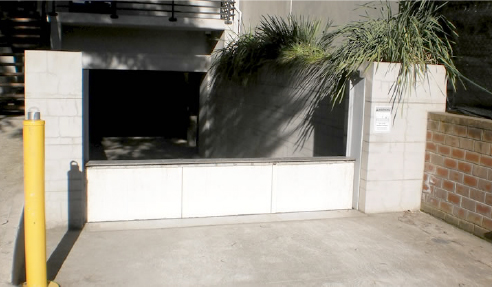Safety Considerations for Self-Closing Flood Barriers by Flooding Solutions

Developed in The Netherlands, the ingenuity of the Hyflo SCFB (Self-Closing Flood Barrier) provide a unique flood defence system that protects property from flood waters. Since its deployment in 1998, the Hyflo SCFB has been installed in several locations across Australia, including Alexandria and Newcastle.
Hydraulics vs. Force of Flood Waters
The Hyflo SCFB does not have mechanical parts , which reduces ongoing maintenance costs as well as the risk of failure. They rely on the force of flood water to deploy, so there is no need for human intervention or a hydraulic system to activate and perform its function of protecting a property from flood.
Why choose the Hyflo SCFB?
The barrier is virtually invisible - staying below the ground and only deploying when needed. Flood barriers can be custom built at any length to suit client's specifications, offering the perfect solution when the aesthetic façade of a building cannot be compromised.

The flood barrier has a minimal maintenance frequency requirement, conducted every 6 to 12 months. A thorough inspection of the unit is conducted including; hydrostatic testing, inspection of leakage of seals at the base of the rising flood wall, visual inspection of seals at the ends of the flood wall, replacement of cracked or perished seals, checking of the oneway valve in the service pit, verification of alarms connected to the building manager, and cleaning of structure gratings from debris and silt.
Hydrostatic testing of the Hyflo SCFB unit operation should preferably be carried out when there is minimal pedestrian and vehicle traffic, to avoid incidents and damages. This is done simply by filling each Hyflo Self-Closing flood barrier unit with water. The total test duration depends on the filling rate of the water supply. Each unit system installed has a warranty against fabrication and installation faults that includes incurring leakage of more than 0.1 l/mtr/min.
Each Self-Closing Flood Barrier unit needs a service pit for controlling the water inlet and the drain. Part of the maintenance plan is to check and assess if all parts of the service pit are working well. The type of service pit depends on where the Self-Closing Flood Barrier will be installed. A standard service pit is necessary when the surface area of the body of water is lower than the surface area of the bottom of the barrier. This setup is sufficient to drain the service pit by itself. A pump should always be included in the flood barrier unit if the surface area of the body of water is higher than that of the flood barrier. This helps to facilitate faster drainage of the unit.
A cost-effective, time-saving and practical solution for potential flood problems the Hyflo SCFB Self-Closing Flood Barrier is the safe choice in flood protection.
Contact Flooding Solutions Advisory group for Hyflo SCFB and other Self-Closing Flood Barrier devices.

|





 Glass Window Flood Barriers by Flooding
Glass Window Flood Barriers by Flooding Self Closing Flood Roller Barrier for
Self Closing Flood Roller Barrier for Flood Protection Barriers Queensland
Flood Protection Barriers Queensland Entry Flood Barriers for Parramatta
Entry Flood Barriers for Parramatta Organic Self-closing Flood Barriers from
Organic Self-closing Flood Barriers from Automatic Recessed Flood Barriers from
Automatic Recessed Flood Barriers from Automatic Drop-down Flood Barriers from
Automatic Drop-down Flood Barriers from Flood Barriers for Heavy Vehicle Areas
Flood Barriers for Heavy Vehicle Areas Passive Flood Barriers for Apartments by
Passive Flood Barriers for Apartments by Expanding Panel Floodgates from Flooding
Expanding Panel Floodgates from Flooding Flood Roller Doors for Medical Centres
Flood Roller Doors for Medical Centres Hyflo Passive Flood Barriers for
Hyflo Passive Flood Barriers for 24/7 Flood Doors Approved Nationwide
24/7 Flood Doors Approved Nationwide Flood Protection for Monash Medical
Flood Protection for Monash Medical High End Retail Drop Down Flood Barriers
High End Retail Drop Down Flood Barriers Automated Drop-Down Flood Barriers from
Automated Drop-Down Flood Barriers from Low Profile Flood Barriers for
Low Profile Flood Barriers for Hyflo Self Closing Flood Door from
Hyflo Self Closing Flood Door from 24/ 7 Flood Doors for Buildings |
24/ 7 Flood Doors for Buildings | How do Hyflo Self Closing Flood Barriers
How do Hyflo Self Closing Flood Barriers
